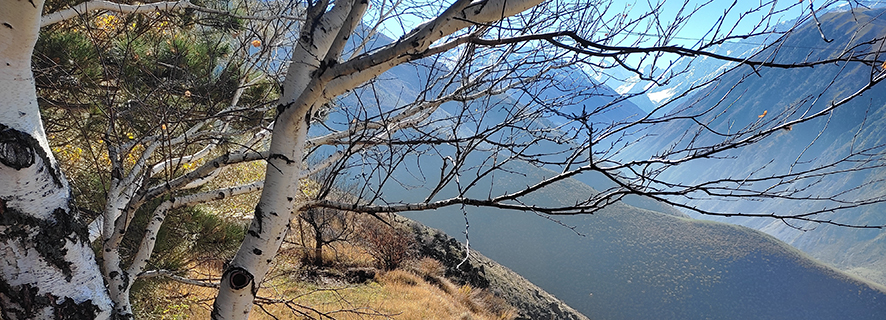We welcome you to the official site of the Research Station of the Russian Academy of Sciences in Bishkek city.
Federal State Budget Institution of Science Research Station of the Russian Academy of Sciences in Bishkek city is the research organization subordinated to the Ministry of Science and Higher Education of the Russia Federation.
The Research Station of RAS engages 57 scientific workers, including 26 researchers, 2 Doctors of Sciences and 8 Candidates of Sciences among them. The overall staff amounts 133 employees.
Address
![]()
720049, Kyrgyzstan.
Bishkek-49, Research Station RAS.
Phone: +996 (312) 613-140
Fax: +996 (312) 611-459
Director

Anatoly Kuzmich Rybin
Doctor of Science
in Physics and Mathematics
e-mail: rybin@gdirc.ru
VIII International Symposium
Dear colleagues!
We would like to remind you of VIII International Symposium «PROBLEMS OF GEODYNAMICS AND GEOECOLOGY OF INTRACONTINENTAL OROGENS» to be held from 28 June to 2 July 2021 within the framework of a Year of Science and Technologies in Russia on the basis of Research Station of RAS (Bishkek city, Kyrgyz Republic).
Symposium format: online
More information on Symposium you can find by the reference below:
Please, take a note, that following numerous applications of participants the Organizing Committee took a decision on prolongation of deadline for application and reports submitting to 25 April, 2021.
Первый циркуляр_VIII Симпозиум НС РАН 2021
Требования к оформлению тезисов
Last Updated on Monday, 17 May 2021 13:18
XIII International Conference
Last Updated on Wednesday, 21 April 2021 08:54
Laboratory of Geophysics
Dear colleagues!
Within the framework of Laboratory of Geophysics activity (Additional Agreement from 30.09.2020 to the Agreement of scientific and technical cooperation between RS RAS and KNU from 23.03.2018) Research Station of RAS holds the lecture course for students and lectures of Faculty of Physics and Electronics of the Kyrgyz National University named after Djusup Balasagyn.
Laboratory of Geophysic (Lecture course)
LECTURE №1 (December 1, 2020, 08:00)
Subject: Review of geophysical research at Research Station of RAS in Bishkek city: magnetotelluric soundings of Tian Shan
Speaker: Doctor of Physics and Mathematics Anatoly Rybin - Director of RS RAS, Chief Researcher of Laboratory of Deep Magnetotelluric Studies (LDMS) of RS RAS
LECTURE №2 (December 4, 2020, 11:05)
Subject: Review of geophysical research at Research Station of RAS in Bishkek city: magnetotelluric soundings of Tian Shan (continuation)
Speaker: Doctor of Physics and Mathematics Anatoly Rybin - Director of RS RAS, Chief Researcher of Laboratory of Deep Magnetotelluric Studies (LDMS) of RS RAS
LECTURE №3 (December 8, 2020, 08:00)
Subject: Induced seismicity as a manifestation of the influence of natural and technogenic factors on the destruction of the Earth’s crust
Speaker: Candidate of Physics and Mathematics Vladimir Sychev, Leading Researcher, Acting Head of Laboratory of Energy-Saturated Media Simulation (LESMS) of RS RAS
LECTURE №4 (December 11, 2020, 11:05)
Subject: Modeling electromagnetic and vibration effects on the earth's crust in experiments on rheological presses
Speaker: Candidate of Physics and Mathematics Vladimir Sychev, Leading Researcher, Acting Head of Laboratory of Energy-Saturated Media Simulation (LESMS) of RS RAS
LECTURE №5 (February 2, 2021, 11:00)
Subject: Studying Modern Movements of the Earth’s Crust by Space Geodesy
Speaker: Candidate of Physics and Mathematics Sergei Kuzikov - Leading Researcher, Acting Head of Laboratory of Studying Modern Movements of the Earth’s Crust by Space Geodesy (LGPS) of RS RAS
LECTURE №6 (February 5, 2021, 11:00)
Subject: Geodezic and geophysical research in the territory of Bishkek Geodynamic Proving Ground
Speaker: Candidate of Physics and Mathematics Sergei Kuzikov - Leading Researcher, Acting Head of Laboratory of Studying Modern Movements of the Earth’s Crust by Space Geodesy (LGPS) of RS RAS
LECTURE №7 (February 16, 2021, 11:00)
Subject: Review of geophysical researches at Research Station of the Russian Academy of Sciences in Bishkek: geomagnetic and seismological observations at Bishkek Geodynamic Proving Ground
Speaker: Candidate of Physics and Mathematics Sanzhar Imashev – Senior Researcher, Acting Head of Laboratory of Complex Research of Geodynamic Processes in Geopbysical Fields (LIS) of RS RAS
LECTURE №8 (February 19, 2021, 11:00)
Subject: Review of geophysical researches at Research Station of the Russian Academy of Sciences in Bishkek: Electromagnetic observations at Bishkek Geodynamic Proving Ground. Study of preseismic temperature anomalies of atmosphere based on satellite data
Speaker: Candidate of Physics and Mathematics Sanzhar Imashev – Senior Researcher, Acting Head of Laboratory of Complex Research of Geodynamic Processes in Geopbysical Fields (LIS) of RS RAS
LECTURE №10 (March 2, 202, 11:00)
Subject: Development of modern systems of geomagnetic and electromagnetic monitoring
Speaker: Vladimir Bobrovsky, Researcher, Acting Head of Laboratory of Advanced Hardware Development (LAHD) of RS RAS
LECTURE №9 (February 26, 2021, 11:00)
Subject: Development of modern equipment for geophysical research: Basic concepts. Tools. Retrospective of LPAR hardware developments
Speaker: Vladimir Bobrovsky, Researcher, Acting Head of Laboratory of Advanced Hardware Development (LAHD) of RS RAS
Last Updated on Tuesday, 06 April 2021 13:41
OPENING OF THE LABORATORY OF GEOPHYSICS
On September 30, 2020 Russian delegation consisting of Dr. Anatoly Rybin, Director of Research Station of the Russian Academy of Sciences in Bishkek city (RS RAS), Olga Zabinyakova, Academic Secretary of RS RAS and Viktor Nefedov, Head of the Russian Center for Science and Culture in the Kyrgyz Republic, visited Kyrgyz National University named after Djusup Balasagyn (KNU).
During the meeting with Rector of KNU Kanat Sadykov, the parties discussed the integration of science and education, and mentioned the need to train highly qualified personnel in the area of "Geophysics", as well as the prospects for joint research in the field of Earth sciences.
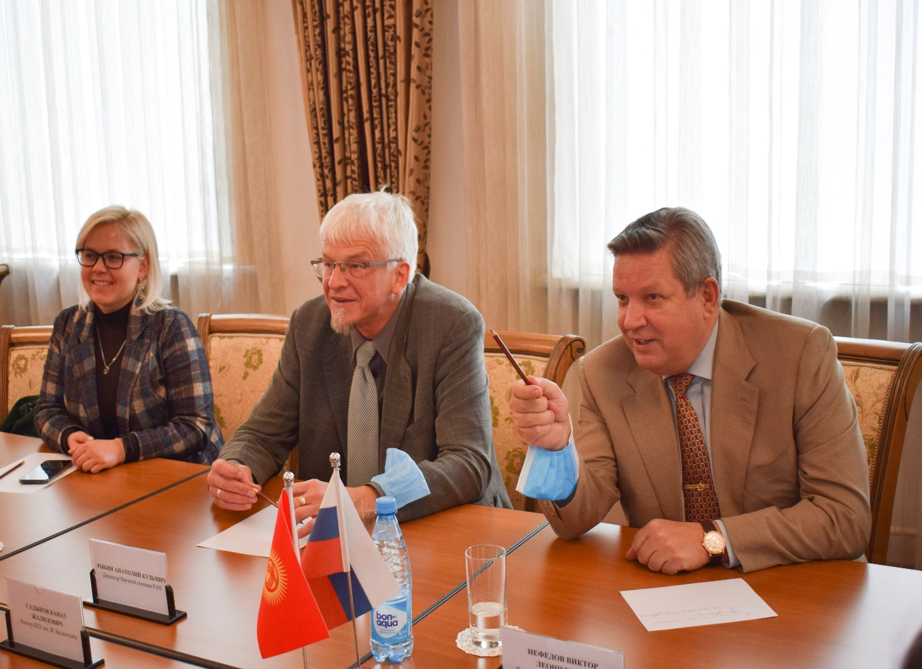
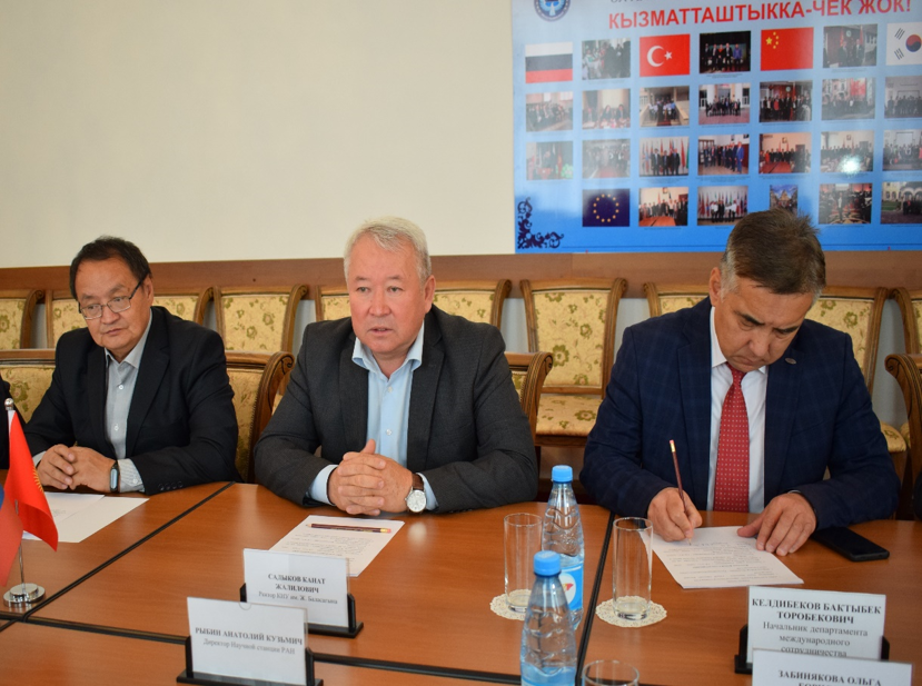
As Kanat Sadykov noted, the establishment of joint research center will strengthen long-term and permanent Kyrgyz-Russian scientific collaboration.
As Anatoly Rybin mentioned, Kyrgyzstan is a very interesting region for conducting geological research, and the need for joint research in this area becomes imminent. The opening of the Laboratory of Geophysics will allow involvement of Kyrgyz students into real geophysical research.
Viktor Nefedov underscored the importance of such Laboratory as it gives the opportunity to “raise” national specialist in Kyrgyzstan. It will become a good example of Russian science contribution in progressive development of Kyrgyzstan.
As a result of detailed discussion the additional Agreement on establishment of joint Laboratory of Geophysics on the base of Department of Electronics and Theoretical Physics of Faculty of Physics and Electronics of KNU has been signed by heads of RS RAS and KNU.
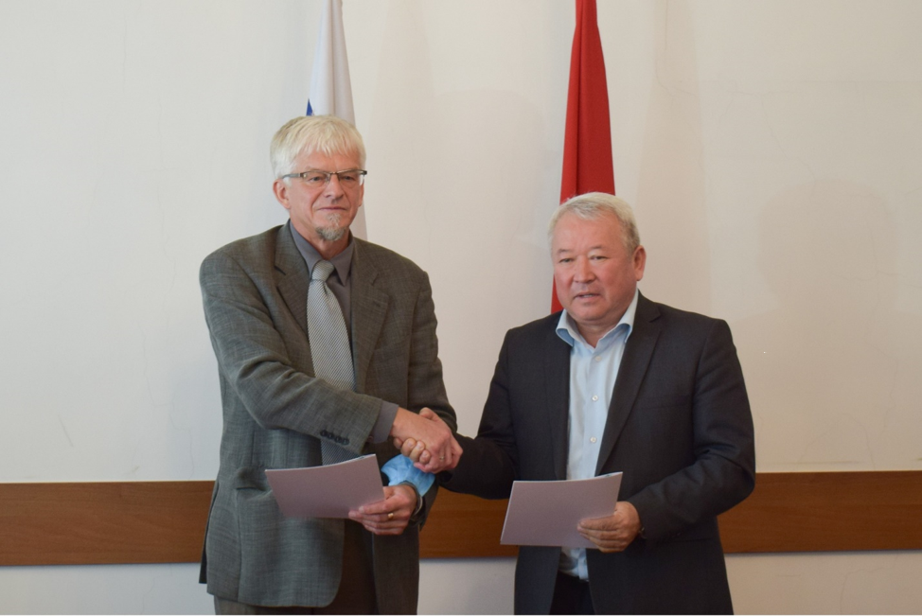
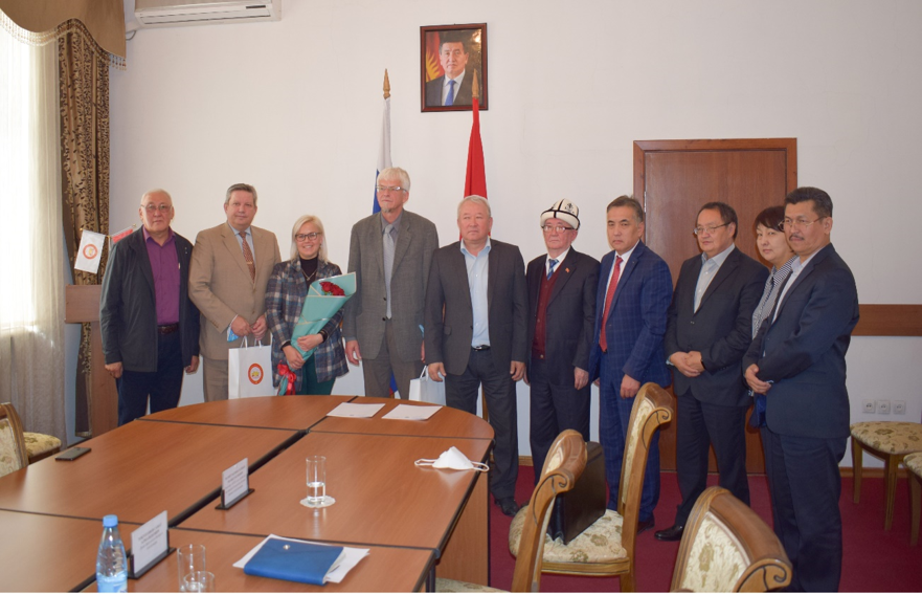
The main Agreement on scientific and technical cooperation between RS RAS and KNU was signed in 2018 (http://www.gdirc.ru/component/content/article/1-latest-news/424-2018-03-27-08-54-14)
Materials partly used:
http://kgz.rs.gov.ru/ru/news/75973
Last Updated on Tuesday, 06 April 2021 13:14
VIII International Symposium
First Circular
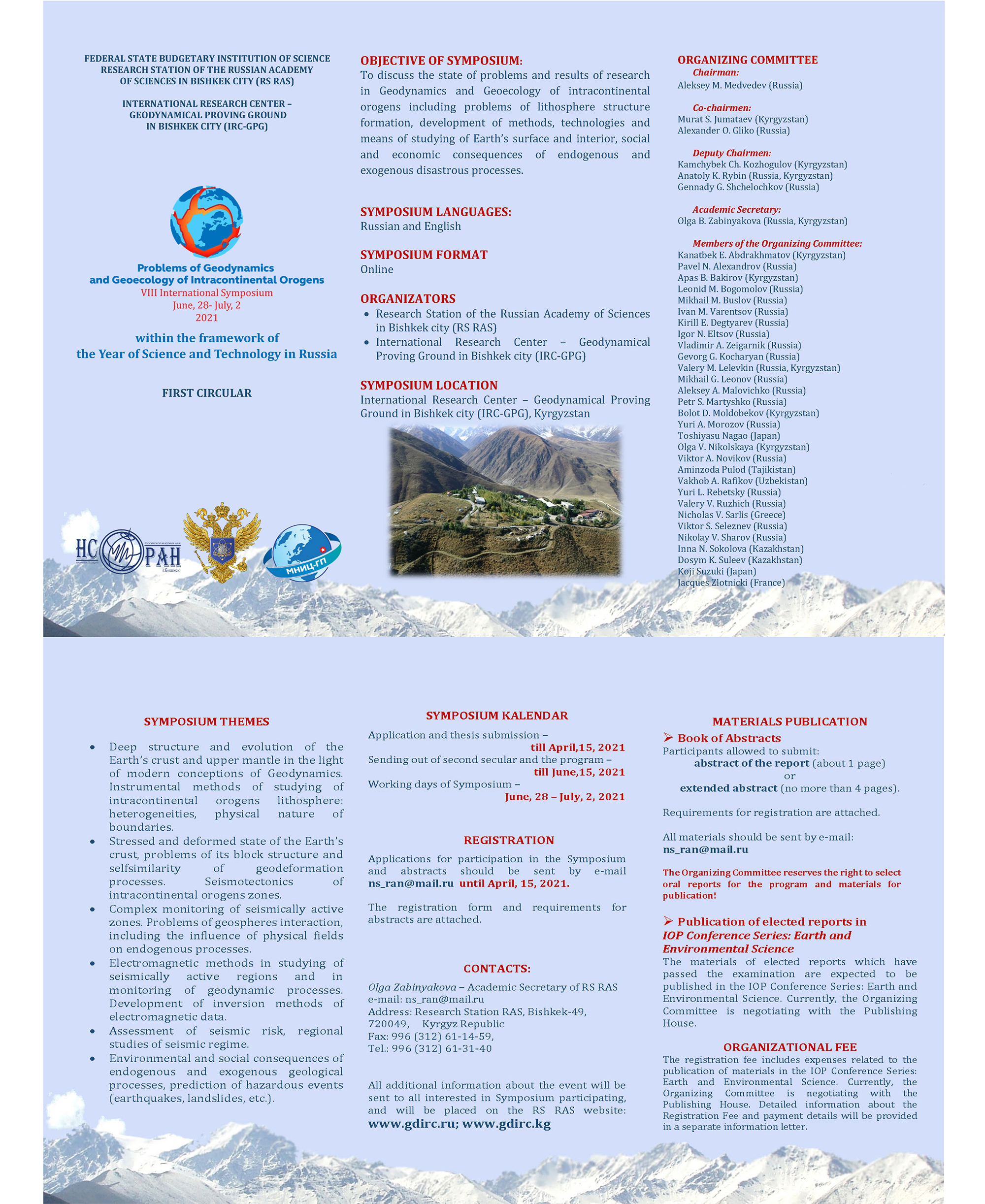
VIII International Symposium_First Circular
Last Updated on Wednesday, 10 March 2021 10:16
Results of the functioning of CCU of IGR in 2020
The Center for Collective Use "Integrated Geodynamic Research" (CCU IGR) on the basis of the RS RAS was created on April 2017.
Center for Collective Use of IGR conducts researches in the field of seismology, space geodesy, magneto-telluric sounding. Appropriate equipment is available for these studies. The telemetry system for the collection and processing of seismic data KNET operates in real time. There is a network of 10 permanent GPS stations, including 2 stations of the International GNSS Service (IGS) international network. Data is collecting via Internet channels, radio modems, telephone modems. Geophysical surveys are being carried out on the territory of the Central Asian GPS network. The base organization carries out precision GPS, linear angle and leveling measurements.
The Center for Collective Use of IGR offers access to the database of the magneto-telluric sounding, to seismological databases, to a continuous stream of seismological data in real time, to raw GPS data in real time, to daily raw GPS data, to data of long-term GPS measurements in Central Asia and Kazakhstan.
The Center for Collective Use of the IGR participates in the activities monitoring, reflecting its results on the http://ckp-rf.ru/auth/ website in accordance with the instructions of the Ministry of Education and Science of Russia. There are 628 registered centers for various purposes in Russia now. Annual competition for users and CCU support money is fierce.
On 2020, in contrast to previous years, more scientific articles with a high level of indexers (Web of Science and Scopus) were published: 18 scientific works based on the use of the equipment of the Center for Collective Use of IGR. The greater activity in publications was shown by N.A. Sycheva (7), L.G. Sverdlik (6), E.A. Bataleva (5). 4 publications have each of K.S. Nepeina, S.A. Imashev and V.N. Sychev.
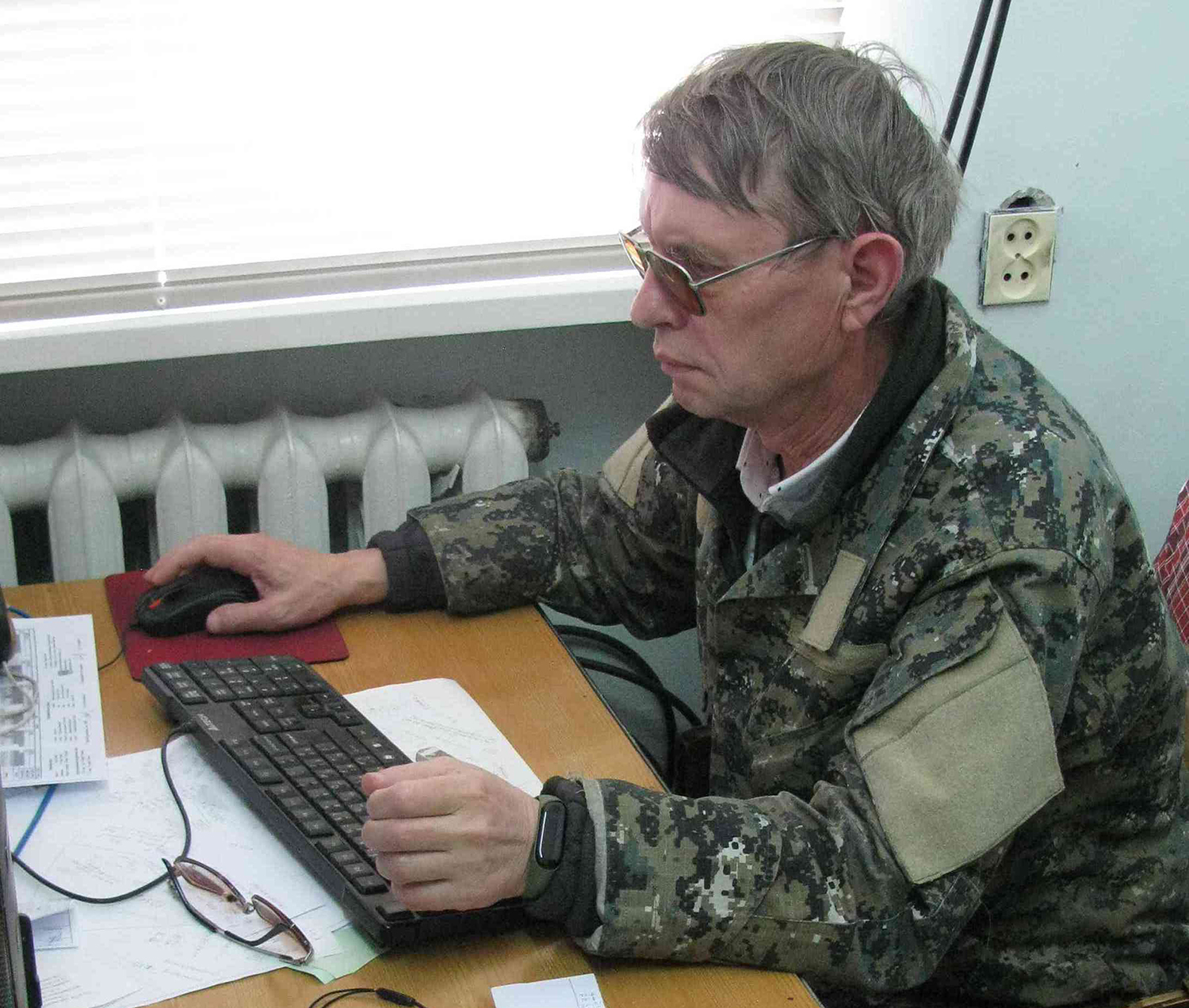
Last Updated on Tuesday, 09 March 2021 15:08
XIII INTERNATIONAL YOUTH CONFERENCE
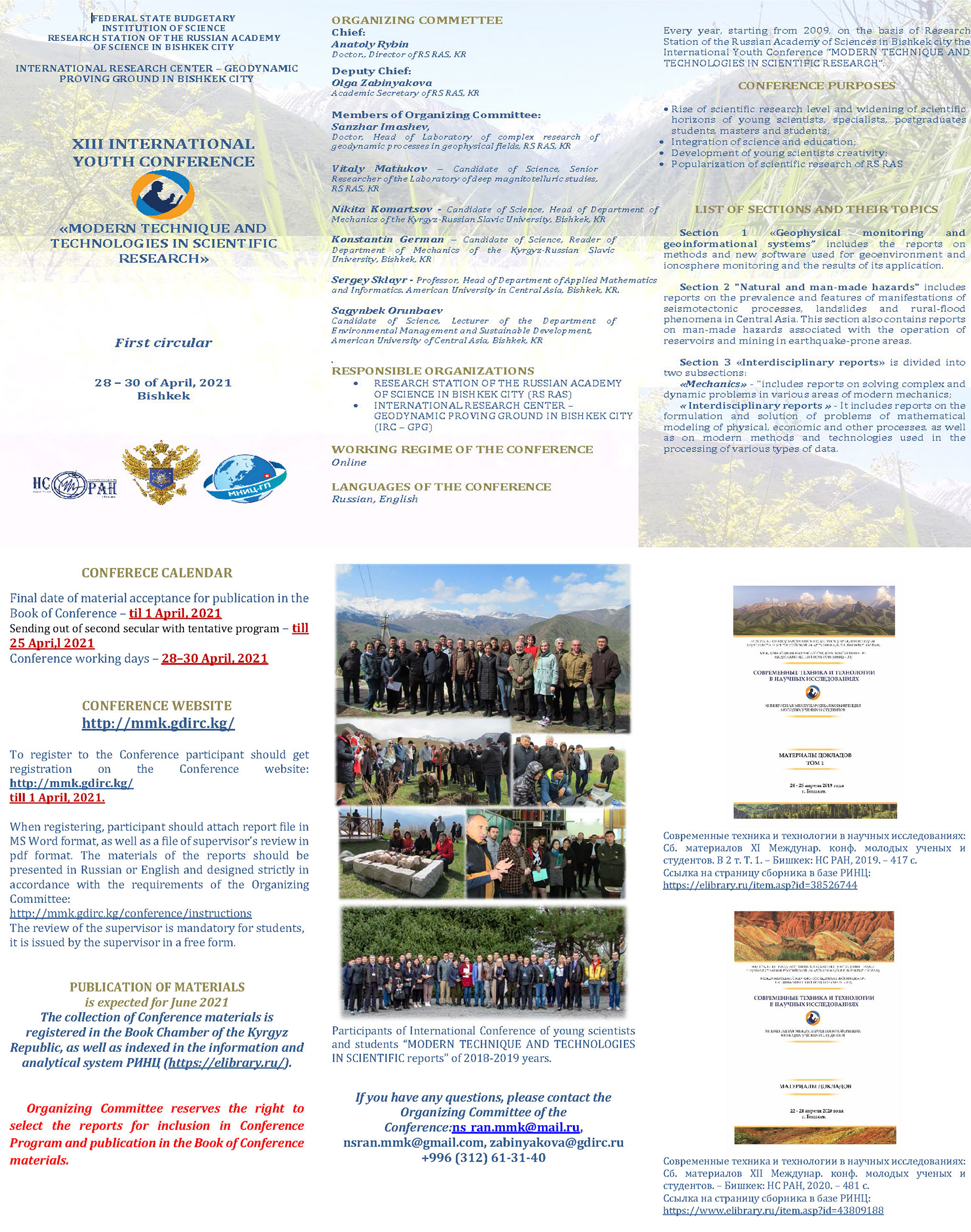
First circular_XIII International youth conference «MODERN TECHNIQUE AND TECHNOLOGIES IN SCIENTIFIC RESEARCH»
Last Updated on Friday, 19 February 2021 13:51
More Articles...
Page 12 of 27
Last news
- XVII International Conference of Young Scientists and Students "MODERN EQUIPMENT AND TECHNOLOGIES IN SCIENTIFIC RESEARCH" – 2025. Collection of materials
- Seminar "Geological and Geophysical Monitoring of the Tien Shan Lithosphere", September 17, 2025
- Research Station of RAS in Bishkek city – 2025 – Collection of reports (24-29 of June 2024)
- Happy Russia Day!
- Gulmira Kozhogulova Kamchybekovna
